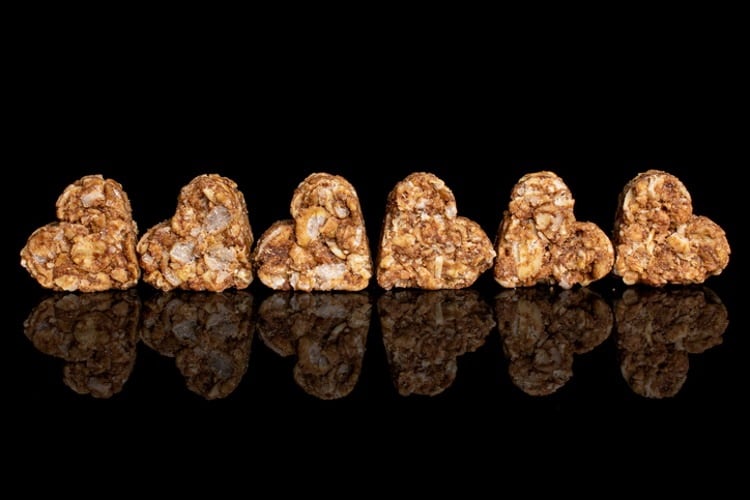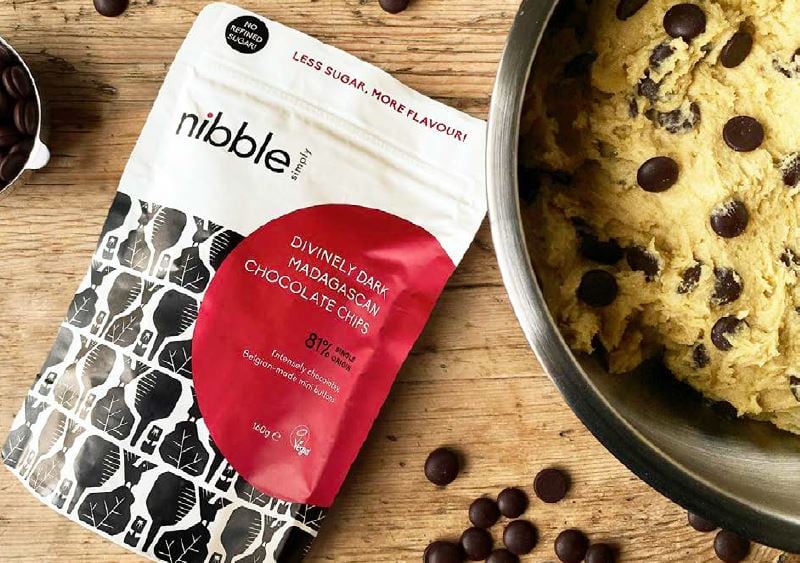The health and wellness sector is gaining ground and demand for healthy snack options looks set to continue to grow. According to projections from Euromonitor, global health and wellness snack sales are expected to top US$98bn by 2025, with a compound annual growth rate of 5.4% predicted.
“The demand for healthy snacks is unabating,” healthy snacks innovator Erin Moroney observed.
Moroney is the founder of protein bites brand Nibble Simply. She believes that COVID-19 has acted as an important catalyst spurring demand for healthy snacks but notes that this is underpinned by longer-term concerns over spiralling obesity rates. “Obesity and diabetes is at an all-time high so consumers are definitely looking for healthier snack options-- even more so post-COVID,” she told us.
“And you can’t outrun a bad diet—with 75% of weight loss down to what you eat. A healthy diet has a huge positive impact on mental health. Post-pandemic, I think everyone is ultimately thinking a lot more about their health overall.”
These trends have resulted in a step-change in the way people view snacking, Amber Fraser, co-founder of snack start-up BRAVE Foods, believes. Nutritional density and positive nutrition are increasingly coming under the spotlight in the snacking space, she said. “As more people start to see snacks as a nutritional boost, rather than just empty calories, ‘purposeful’ snacking - snacking for fuel, focus, or a protein boost, for example - will become even more mainstream."

This has resulted in a jump in the number of snacks that are jostling for position in the better-for-you space. Some are linking to nutrients that deliver specific health benefits – such as high in protein – while others might focus on being low in fat or sugar. But what happens if this health halo isn’t deserved?
Is healthwashing running rampant?
According to Moroney, this is more common than you might think. “This is one of my biggest bugbears. So many ‘health’ snacks are either packed with sugar—many refined sugar free snack bars/ balls contain more sugar than a Kit Kat—or they contain unhealthful or Frankenstein ingredients, hiding behind ‘low sugar’ claims,” she warned.
Worse still, Moroney claimed, some brands positioned in the health space will deliberately obscure warnings they are legally required to carry – a particular problem online. “Some ‘health’ products must carry health warnings that are often obscured or non-existent. Products containing at least 10g per 100g sugar alcohols must legally declare a laxative warning. These warnings are often not listed at point of sale (brand websites), they are hard to find, sometimes listed in the creases of packs, and on supermarket websites they are either not listed or hidden in the ‘usage’ tab. This really has to be easier for consumers to navigate,” she argued.
A recent report from Bite Back 2030 aimed to expose the powerful, deliberate and dishonest marketing tactics being employed by the food and drinks industry to encourage teenagers to eat unhealthy products.
In partnership with researchers from Livity and Action on Sugar, Bite Back 2030 assessed the nutritional content of over 500 ‘health halo’ food and drink products. They found over half (57%) of all products surveyed are HFSS and would receive a red colour-coded nutritional information label; that nearly two-thirds (62%) of all drink products were ‘dangerously’ high in sugar; and less than 6% of products are meeting guidance on free sugar.
BRAVE founder Fraser agreed that health claims made by products that don’t deliver on nutrition are a big problem for the snacking category. “There’s definitely a fair amount of healthwashing in the last few years with the rise of brands looking and sounding healthy, but in reality differing little from a bag of potato crisps when it comes to nutritional value.”

Combating healthwashing through regulation and education
There are obvious risks to a category where a large number of players make unsubstantiated claims, with increasingly sceptical consumers losing trust in the products on offer.
Rising levels of obesity are a grave concern to public health systems, regulators and policy makers. Figures from the UK’s NHS out today laid bare ‘alarming’ trends when it was revealed that childhood obesity rates in England increased to 25% 10- and 11-year-olds over lockdown, up from 21% in 2019-20.
Regulatory restrictions on unhealthy products are tightening across Europe. The UK, for instance, is spearheading new HFSS rules that impose media and promotional restrictions on 'unhealthy' products. Volume promotions, such as buy-one-get-one-frees and two-for-one deals, will no longer be allowed for these items. A ban will come into force on HFSS products being placed in secondary promotional locations in stores, such as end of aisle displays, store entrances and checkouts. Marketing of HFSS SKUs will no longer be permitted in digital and pre-watershed TV.
To some, this represents a game-changing update – particularly in light of the traditionally HFSS snacks that have been allotted pride of place in prominent store locations such as checkouts.
“HFSS represents a significant shift in the retail space and while it will require the retailers to rethink many of their key areas. We did a survey of a major retailer recently, and found that more than 50% of their in-queue range was not compliant, so we expect some quite sweeping changes next year,” Fraser said noting that it represents a ‘big opportunity’ for low fat, sugar and salt brands like BRAVE.

Moroney is a little more sceptical of the impact that the HFSS legislation will have, worrying that it is largely based on ‘outdated’ nutrition information.
“I think there will be a lot more NPD in this area, but I’m a little worried it may not have the results people are expecting. In my opinion, the Department of Health’s Nutrient Profiling Model is based on pretty outdated nutritional science (this scoring system was drawn up over 15 years ago). In this classification, foods that are higher in fat (which are more calorific but also more satiating) get disproportionately penalised compared to foods that are packed with sugar—which is where the real obesity problem lies.
“In the HFSS classification system, any foods scoring over 4 are deemed 'less healthy'. Based on this incredibly complicated scoring system, virgin olive oil receives an unhealthy score of 15, while highly processed white sliced bread is deemed healthy at -2 (yes, minus two!!). Ask any metabolic health expert or diabetologist and he/she will tell you this should be the other way around.”
If the expected surge in healthy innovation is targeted purely at meeting the HFSS requirements, Moroney is concerned we could see the creation of ‘a whole new generation of faux-healthy, junk food products’.
She believes that consumer education is an important lever to negate this risk. "The industry definitely needs to do more to protect and educate the public, while offering more genuinely healthy options."
Opportunities for 'genuinely healthy' innovation
So, where do the opportunities in healthy snack innovation lie? What should product formulators concentrate their efforts on?
Sugar is possibly the hottest topic. And reducing sugar while maintaining the organoleptic properties that people want from snacks is a significant challenge.
Nibble Simply has just created its own low-sugar chocolate because it couldn’t source an ingredient that met the nutritional profile it was looking to include in its protein snack line. The snack business wanted to source a refined sugar-free, vegan chocolate chips for their new keto friendly range. When they couldn’t find chocolate chips sweetened with coconut sugar – and containing 17% sugars of less – they ‘had to make their own’. The result is Nibble’s Divinely Dark Madagascan Chocolate Chips, containing 64% less sugar than most commercially available chocolate chips.

Looking back on the challenges, Moroney recalled: “When creating lower sugar products in particular, the challenge is always around finding the balance between achieving the desired shelf-life, while nailing the taste and texture, mouthfeel. Sugar lowers the water activity (it binds to available water to prevent molds and bacteria forming) so when you reduce or remove it, the shelf life dramatically drops. Sugar also acts as a humectant so reducing it also affects the texture. It’s technically really challenging to produce lower sugar products without the junk. And people who have high sugar diets, often mistake sweetness for flavour.”
For BRAVE’s Fraser there are also big opportunities to be had around exploring underutilised nutritionally dense ingredients that can be brought into the snack aisle. This observation prompted BRAVE to develop a range of snack products made from chickpeas.
“Much of snacking is still based on the same core ingredients and many of them are nutritionally empty. But they’re tasty and cheap and hence they’re still around. We’re putting a big bet on pulses and think even more innovation will be coming out using them as a core ingredient. They are nutritionally unrivalled, have excellent taste and, just as importantly, they are a wonder crop," Fraser enthused.




